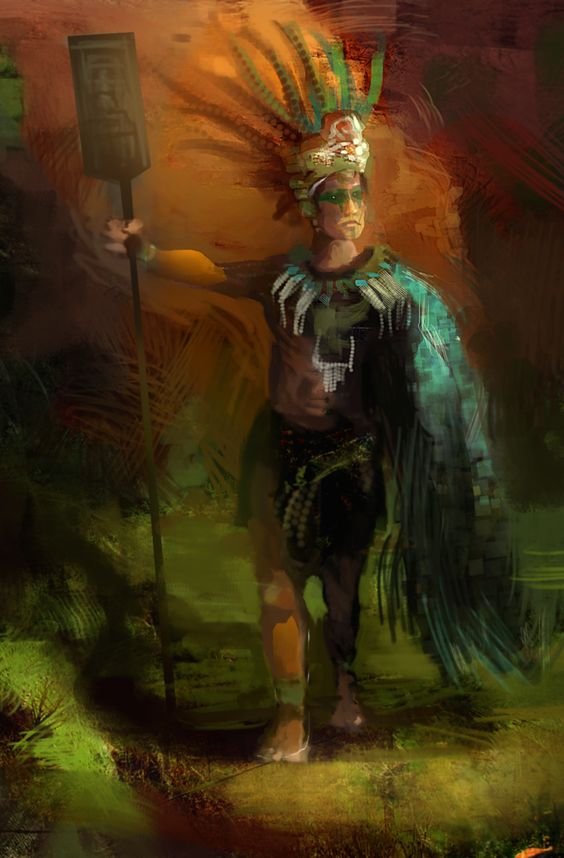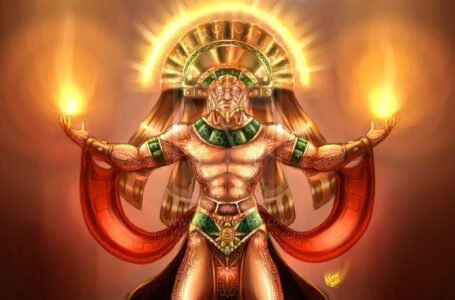#WorldOfMythologies : Mayan Mythology the Mesoamerican

Mayan Mythology is a polytheistic set of myths and beliefs of the Mesoamerican people including a variety of factors like colorful, all-encompassing, harsh, magnificent, realistic, and highly spiritual. The Mayan mythology furnishes several myths about the creation of the world. The gods first created the Earth and the sun followed by the birds and animals. The Mayan gods wanted to be revered, remembered, and glorified but the animals lacked the ability to speak. So the gods’ first attempt was a failure. Then they devised the human experiment. They created a body using earth and mud. Again their experiment was futile as the corpse just dissolved and disintegrated. In the next attempt they used wood to build a human body, while the other two attempts failed, this one was a success. Thus the first human being was created. These manikins and woodcarvings came into being and proliferated. They wandered wherever they pleased.

However, their souls were empty and they had no recollection of their mason or builder. The Mayan gods still dissatisfied with humanity obliterated them with a massive deluge. In the fourth and final attempt, corn and water are believed to have been the ingredients used to create the human body. These humans not only defied the expectations of the gods by praying to them but also possessed the flawless vision and perfect knowledge. This perfection worried the Mayan gods as they believed that beings merely created by them should not be endowed with divine abilities. As a result, the human’s eyesight was blurred by the hurricane and the plumed serpent. These people then inhabited the lands comprising modern-day Yucatan, Quintana Roo, Campeche, Tabasco, and Chiapas in Mexico and southward through Guatemala, Belize, El Salvador, and Honduras.
The Mayan gods were involved in every aspect of the life of the Maya. They controlled the weather, and the harvest, they dictated one’s mate, presided over every birth, and were present at one’s death. As the gods were depicted as cross-eyed, mothers would dangle a bead from the forehead of their children so that their eyes would become crossed. Similarly, children’s heads were bound, especially males, in order to elongate the forehead in emulation of the gods, especially the very popular Maize God figure. The clothing is worn by the nobility, and especially the ruler of a city, mimicked the dress of the gods. The way in which a city was planned and the precision with which the central temples were constructed all followed from an understanding of the way of the Mayan gods.

The Mayan civilization can be broadly classified into several periods namely The Archaic period: 7000-2000 BCE, The Olmec Period: 1500-200 BCE, The Zapotec Period: 600 BCE-800 CE, The Teotihuacan Period: 600 BCE-800 CE, The El Tajin Period: 250-900 CE, The Classic Maya Period: 250-950 CE and The Post-Classic Period: 950-1524 CE. The Mayan civilization flourished in Mesoamerica from 300 BC until the Spanish invasion in the early 1500s. It has been estimated that Mayans worshipped over 150 – 250 deities but the major gods and goddesses who were venerated and invoked by most of the people were Itzamna- The ruler of the heavens, Ix Chel- The moon goddess, Kinich Ahau- The sun god, Chaac- The rain god, Yumil Kaxob- The god of flora, Yum Cimil- The god of death, Yum Kaax- The god of forests, Huracan- The god of storms and chaos, Ix Tab- The goddess associated to suicide, Acan- The god of intoxication, Kukulkan- The plumed serpent, Camazotz- The bat monster.

The assertion that the Mayan perished solely because their cities were abandoned is not only incorrect but also demeaning to the roughly six million Maya living today. In the contemporary era, the Maya still cultivate the same land and traverse the same rivers that their forefathers did, from the Yucatan in the north to Honduras in the south, and carry on their predecessors’ customs. Since Stephen’s and Catherwood’s exploration and documentation of the Maya ruins, a great deal has been known about them. Nothing of importance has been forgotten by the Maya living today and the cycle of life continues.


